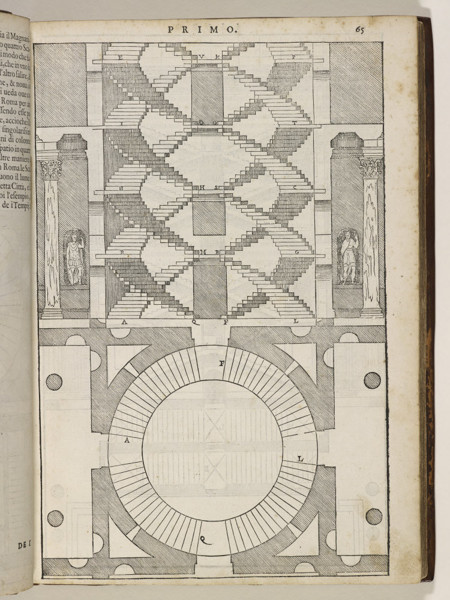Early in his collecting odyssey, animation historian, archivist, and educator Tommy José Stathes earned the honorific Cartoon Cryptozoologist from Cinebeasts, a “New York-based collective of film nerds, vidiots, and programmers investigating the furthest reaches of the moving image universe.”
More recently, George Willeman, a nitrate film expert on the Library of Congress’ film preservation team dubbed him “the King of Silent Animation.”
The seed of Stathes’ enduring passion took root in his 90s childhood, when slapped together VHS anthologies of cartoons from the 30s and 40s could be picked up for a couple of bucks in groceries and drugstores. These finds typically included one or two silent-era rarities, which is how he became acquainted with Felix the Cat and other favorites who now dominate his Early Animation Archive.
He squeezed his parents and grandparents for memories of cartoons screened on television and in theaters during their youth, and began researching the history of animation.
Realizing how few of the early cartoons he was learning about could be widely viewed, he set out to collect and archive as many examples as possible, and to share these treasures with new audiences.
His collection currently consists of some 4,000 animated reels, truffled up from antique shops, flea markets, and eBay. In addition to his Cartoons on Film YouTube channel, he hosts regular in-person Cartoon Carnivals, often curated around holiday themes.
Stathes’ passion project is giving many once-popular characters a second and in some cases, third act.
Take Farmer Alfalfa, (occasionally rendered as Al Falfa), the star of 1923’s The Fable of the Alley Cat, an installment in the Aesop’s Fables series, which ran from 1921 to 1929.
His first appearance was in director Paul Terry’s Down on Phoney Farm from 1915, but as Stathes observes, baby boomers grew up watching him on TV:
Nearly all of these folks who mention the character will also reference ‘hundreds’ of mice. Few may have realized that, while the Farmer Alfalfa cartoons running on television at that time were already old, the films starred one of the earliest recurring cartoon characters, and one that enjoyed an incredibly long career compared with his cartoon contemporaries.
The Fable of the Alley Cat honks a lot of familiar vintage cartoon horns — slapstick, mayhem, David triumphing over Goliath… cats and mice.
Stathes describes it as “a rather sinister day in the life of Farmer Al Falfa — It’s clear that the animal kingdom tends to despise him! — and his documentation is meticulous:
The version seen here was prepared for TV distribution in the 1950s by Stuart Productions. The music tracks were originally composed by Winston Sharples for the Van Beuren ‘Rainbow Parade’ cartoons in the mid-1930s.
The mismatched duo, Mutt and Jeff, got their start in daily newspaper comics, before making the leap to animated shorts.
Animation connoisseurs go bananas for the perspective shift at the 14 second mark of Laughing Gas (1917), a rarity Stathes shares as a reference copy from the original 35mm nitrate form, with the promise of a full restoration in the future.
(A number of Stathes’ acquisitions have deteriorated over the years or sustained damage through improper storage.)
Dinky Doodle and his dog Weakheart were 1920s Bray Studios crowdpleasers whose stint on television is evidenced by the midcentury voice over that was added to Dinky Doodle’s Bedtime Story (1926).
The characters’ creator, director Walter Lantz appears as “Pop” in the above live sequences.
Cartoons On Film has coaxed Koko the Clown, Flip the Frog, Bonzo the Pup, and Mickey Mouse precursor, Oswald the Lucky Rabbit, out of mothballs for our viewing pleasure.
Stathes’ collection also dredges up some objectionable period titles and content, Little Black Sambo, Redskin Blues, and Korn Plastered in Africa to name a few.
Stathes is mindful of contemporary sensibilities, but stops short of allowing them to scrub these works from the historic record. He warns would-be viewers of The Chinaman that it contains a “racist speech balloon as well as an intertitle that was cut from the later TV version for obvious reasons:”
Such was the vulgar terminology in those days. To question or censor these films would be denying our history.
Begin your explorations of Tommy José Stathes’ Early Animation Archive here and if so inclined, contribute to the costly storage of these rarities with a Ko-fi donation.
Related Content
Early Japanese Animations: The Origins of Anime (1917 to 1931)
The First Animated Feature Film: The Adventures of Prince Achmed by Lotte Reiniger (1926)
Watch Dziga Vertov’s Unsettling Soviet Toys: The First Soviet Animated Movie Ever (1924)
The First Avant Garde Animation: Watch Walter Ruttmann’s Lichtspiel Opus 1 (1921)
– Ayun Halliday is the Chief Primatologist of the East Village Inky zine and author, most recently, of Creative, Not Famous: The Small Potato Manifesto and Creative, Not Famous Activity Book. Follow her @AyunHalliday.













